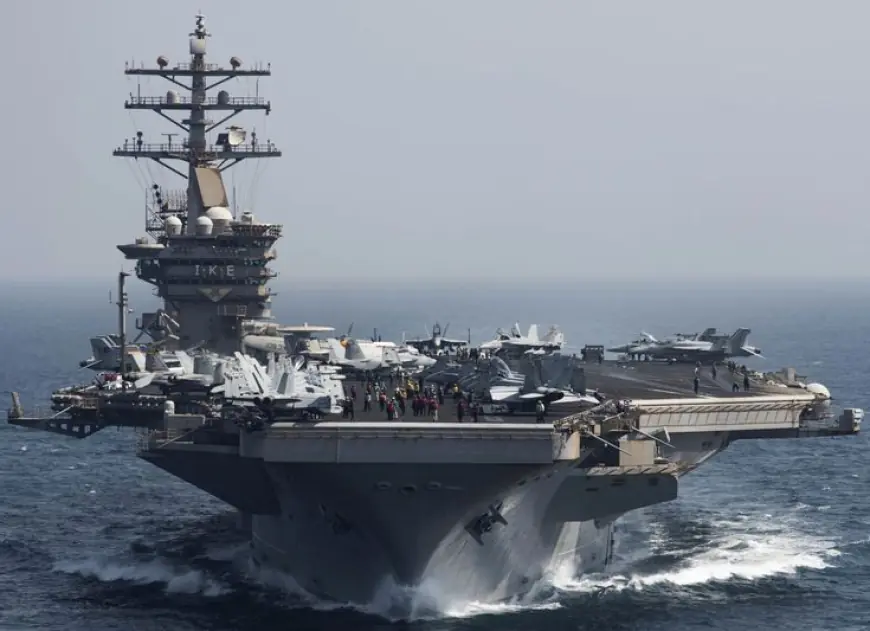10 Essential Navy Current Affairs for 2025 Strategic Shifts & Global Maritime Power
Explore the top 10 Navy current affairs shaping 2025 – from advanced naval technology to global maritime strategies.

As we sail deeper into 2025, the global maritime domain continues to experience rapid transformation driven by technology, strategic alliances, and evolving security challenges. From advanced submarine programs to joint naval exercises and green fleet initiatives, the world’s navies are rewriting their playbooks to dominate the seas. Here are 10 essential navy current affairs for 2025 that every defense enthusiast, policymaker, and strategic analyst should track closely.
1. Advancement in AI-Powered Naval Systems
Artificial Intelligence is no longer a futuristic concept but a frontline reality in naval operations. AI-driven navigation, predictive maintenance, and automated threat detection systems are redefining naval warfare. In 2025, leading navies, including the US, UK, and India, have integrated AI for faster decision-making and enhanced operational efficiency.
2. Rise of Autonomous Warships
Unmanned Surface Vessels (USVs) and Autonomous Underwater Vehicles (AUVs) have become a core element of modern naval fleets. These vessels reduce human risk during high-threat missions while providing cutting-edge surveillance and combat capabilities. Several NATO and Indo-Pacific countries are investing heavily in autonomous naval platforms this year.
3. Expansion of Indo-Pacific Naval Alliances
The Indo-Pacific remains the hotspot of naval diplomacy in 2025. Quad nations—India, Japan, Australia, and the US—have amplified maritime drills to counterbalance growing regional tensions. Enhanced partnerships with ASEAN nations ensure greater maritime security and freedom of navigation.
4. Submarine Modernization Programs
Submarines continue to be the backbone of deterrence strategies. In 2025, several nations, including India, France, and South Korea, launched next-generation nuclear-powered submarines equipped with advanced stealth and long-range strike systems. This modernization reflects a growing emphasis on underwater supremacy.
5. Cybersecurity as a Naval Priority
With war shifting into the digital realm, cybersecurity has emerged as a critical front in naval defense. Navies worldwide are fortifying their IT infrastructure to prevent cyber-attacks on critical systems like missile guidance, radar, and communication networks. Cyber drills are now as vital as sea drills.
6. Green Naval Initiatives
Environmental sustainability has entered the naval agenda. In 2025, multiple countries are adopting hybrid propulsion systems and biofuel-powered vessels to cut emissions and meet international climate goals. The concept of the “Green Fleet” is rapidly gaining momentum across NATO and Asian navies.
7. Carrier-Based Drone Operations
Aircraft carriers are evolving with the integration of drone technology. Carrier-based Unmanned Combat Aerial Vehicles (UCAVs) are providing new dimensions in strike capability and reconnaissance missions. The U.S. Navy’s latest trials with advanced drone swarms from aircraft carriers have set the benchmark for future naval aviation.
8. Arctic Naval Strategies
Climate change and melting ice caps have opened new maritime routes in the Arctic, prompting strategic interest from global powers. 2025 sees intensified Arctic patrols, ice-class ship deployments, and resource exploration, making the Arctic the new frontier of naval competition.
9. Maritime Anti-Piracy & Counter-Terrorism Operations
Piracy and maritime terrorism continue to threaten shipping lanes, especially in the Gulf of Aden and Southeast Asia. Enhanced joint operations, real-time surveillance, and rapid response units have significantly improved maritime safety, though challenges persist in volatile regions.
10. Naval Space Integration
2025 marks a revolutionary leap with the integration of space technology into naval operations. From satellite-based missile guidance to space-enabled communication systems, navies are bridging sea and space warfare for superior strategic dominance.
Why These Developments Matter
These navy current affairs 2025 are not isolated updates—they signify the future trajectory of global security. Naval forces worldwide are moving toward automation, sustainability, and joint maritime governance to address emerging threats. From AI-driven operations to Arctic strategies, the seas are becoming the ultimate stage for technological supremacy and geopolitical influence.
Final Thoughts
The future of naval power hinges on adaptability, innovation, and strategic alliances. For defense professionals, policy analysts, and enthusiasts, staying updated on these critical trends is imperative. Theveza brings you the most comprehensive insights into 10 essential Navy current affairs for 2025, ensuring you stay ahead in understanding global maritime developments.
What's Your Reaction?
 Like
0
Like
0
 Dislike
0
Dislike
0
 Love
0
Love
0
 Funny
0
Funny
0
 Angry
0
Angry
0
 Sad
0
Sad
0
 Wow
0
Wow
0


















































